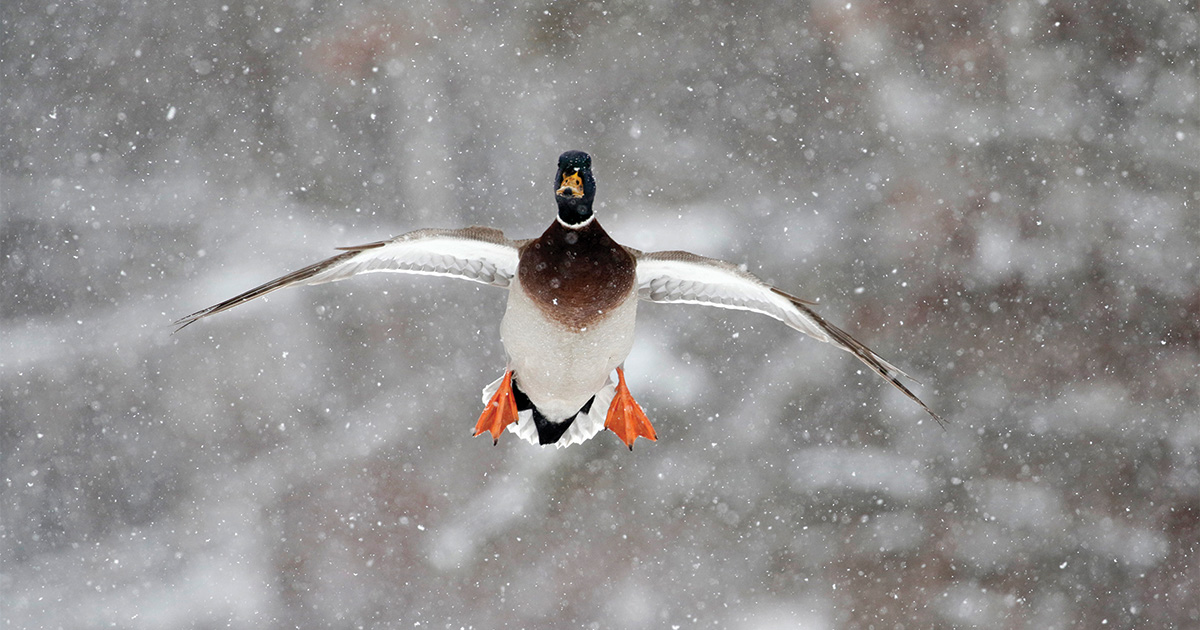Migration Alert: Midwestern Waterfowlers Brace for Winter Weather
Jan. 11, 2024 – Mississippi Flyway – Great Lakes Region
Jan. 11, 2024 – Mississippi Flyway – Great Lakes Region

Following weeks of unusually mild temperatures, Mother Nature has finally called up some relief, as a series of impactful winter weather systems are poised to sweep across the Midwest and into the Deep South. While borderline balmy conditions have allowed a huge contingent of North America’s waterfowl to stay hundreds of miles farther north than normal, the Arctic onslaught will hopefully drive waterfowl south to traditional areas.
In addition to kick-starting long overdue migration activity, the weather will be “duckier” than it has been all season. Bitter-cold temperatures, high winds, and accumulating snow, coupled with rapid ice development on any water that isn’t moving, should keep ducks and geese moving as they seek food and open water.
Indiana, Illinois, and Ohio all have southern duck hunting zones that will remain open through late January, while dark goose seasons in Indiana and Ohio stretch into February. Hunters in these areas as well as in nearby Kentucky should be ready for what could be the best hunting of the season.
A strong finish would come in sharp contrast to what many have described as the worst season in their lifetimes. January survey numbers bear this out in many locations.
While the polar plunge will undoubtedly get birds moving, Indiana Department of Natural Resources waterfowl research biologist Adam Phelps cautions that the brutal conditions could be a mixed bag for Midwestern hunters.
“Trying to predict what ducks are going to do is harder than predicting the weather, because it involves predicting the weather first, then predicting what the birds will do in response,” Phelps explains. “We could get a huge push of new birds that sticks around, or we could watch a huge push of birds fly over us. Then we could see some of those birds bounce back as the temperatures fluctuate over the coming weeks.”
Where dark goose seasons remain open in Illinois, Indiana, and Ohio (Michigan’s late season opens in February) hardy Canada geese still have plenty of food in cornfields, many of which were harvested the past couple weeks. However, with subzero temperatures predicted in the coming days, it’s a good bet some of the big geese will head south too.
The bottom line: This is not a drill; it’s the real deal. For waterfowlers, this might be the perfect opportunity to salvage an otherwise lackluster season.
Stay up to date with the latest migration information.